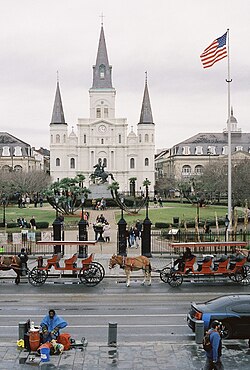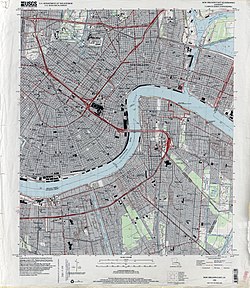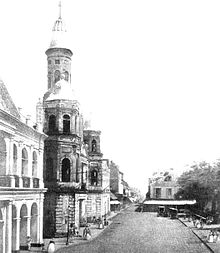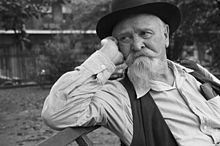
The French Quarter, also known as the Vieux Carré, is the oldest neighborhood in the city of New Orleans. After New Orleans was founded in 1718 by Jean-Baptiste Le Moyne de Bienville, the city developed around the Vieux Carré, a central square. The district is more commonly called the French Quarter today, or simply "The Quarter", related to changes in the city with American immigration after the 1803 Louisiana Purchase. Most of the extant historic buildings were constructed either in the late 18th century, during the city's period of Spanish rule, or were built during the first half of the 19th century, after U.S. purchase and statehood.

The Cathedral-Basilica of Saint Louis, King of France, also called St. Louis Cathedral, is the seat of the Roman Catholic Archdiocese of New Orleans and is the oldest cathedral in continuous use in the United States alongside the Royal Presidio Chapel in Monterey, California. It is dedicated to Saint Louis, also known as King Louis IX of France. The first church on the site was built in 1718; the third, under the Spanish rule, built in 1789, was raised to cathedral rank in 1793. The second St. Louis Cathedral was burned during the great fire of 1788 and was expanded and largely rebuilt and completed in the 1850s, with little of the 1789 structure remaining.
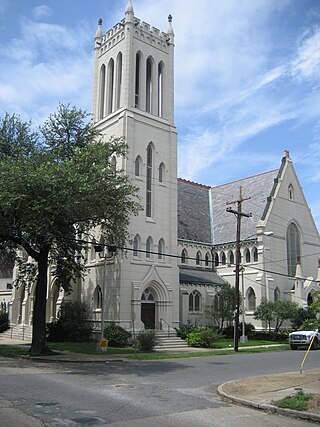
Christ Church Cathedral, located today at 2919 St. Charles Avenue, in New Orleans, Louisiana, in the United States, was the first non-Roman Catholic church founded in the entire Louisiana Purchase territory. It was founded in 1803 as Christ's Church by the Protestant inhabitants of New Orleans, and is today the official seat of the Bishop of Louisiana, in the Episcopal Diocese of Louisiana.
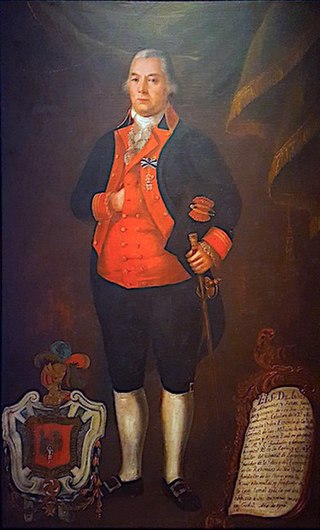
DonAndrés Almonaster y Roxas de Estrada was a Spanish civil servant and philanthropist of New Orleans, today chiefly remembered for his numerous charitable benefactions made to the city of New Orleans.
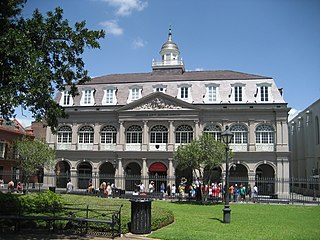
The Cabildo, originally called "Casa Capitular", is a historical building in New Orleans, Louisiana. Originally the seat of Spanish colonial city hall, the building now forms part of the Louisiana State Museum. It is located along Jackson Square, adjacent to St. Louis Cathedral.

The Louisiana State Museum (LSM), founded in New Orleans in 1906, is a statewide system of National Historic Landmarks and modern structures across Louisiana, housing thousands of artifacts and works of art reflecting Louisiana's legacy of historic events and cultural diversity.

James Gallier was a prominent nineteenth-century Irish-born American architect, most famed for his buildings in New Orleans. Gallier Hall, which he designed and once served as New Orleans City Hall, is named after him.

The Great New Orleans Fire (1788) was a fire that destroyed 856 of the 1,100 structures in New Orleans, Louisiana, on March 21, 1788, spanning the south central Vieux Carré from Burgundy to Chartres Street, almost to the Mississippi River front buildings. An additional 212 buildings were destroyed in a later citywide fire, on December 8, 1794.

The Great New Orleans Fire (1794) was a major fire that destroyed 212 structures in New Orleans, Louisiana on December 8, 1794, in the area now known as the French Quarter from Burgundy to Chartres Street, adjacent to the Mississippi River. On March 12, 1788, just 6 years prior, 856 buildings had been destroyed in the First Great New Orleans Fire.

The Presbytère is an architecturally important building in the French Quarter of New Orleans, Louisiana. It stands facing Jackson Square, adjacent to the St. Louis Cathedral. Built in 1813 as a matching structure for the Cabildo, which flanks the cathedral on the other side, it is one of the nation's best examples of formal colonial Spanish architecture. It was designated a National Historic Landmark in 1970, and is now a property of the Louisiana State Museum.

The buildings and architecture of New Orleans reflect its history and multicultural heritage, from Creole cottages to historic mansions on St. Charles Avenue, from the balconies of the French Quarter to an Egyptian Revival U.S. Customs building and a rare example of a Moorish revival church.

The Pontalba Buildings form two sides of Jackson Square in the French Quarter of New Orleans, Louisiana. They are matching red-brick, one-block-long, four‑story buildings built between 1849–1851 by the Baroness Micaela Almonester Pontalba. The ground floors house shops and restaurants; and the upper floors are apartments which, reputedly, are the oldest continuously-rented such apartments in the United States.

Micaela Leonarda Antonia de Almonester Rojas y de la Ronde, Baroness de Pontalba was a wealthy New Orleans-born Creole aristocrat, businesswoman, and real estate designer and developer, who endures as one of the most recalled and dynamic personalities in the city's history, though she lived most of her life in Paris.

The Louisiana State Museum's 1850 House is an antebellum row house furnished to represent life in mid-nineteenth-century New Orleans. It is located at 523 St. Ann Street on Jackson Square in the French Quarter.

The U.S. Custom House, also known as the Old Post Office and Custom House, is a historic government building at 423 Canal Street in New Orleans, Louisiana. It was designated a National Historic Landmark, receiving this designation in 1974 and noted for its Egyptian Revival columns. Construction on the building, designed to house multiple federal offices and store goods, began in 1848 and didn't finish until 1881 due to redesigns and the American Civil War. The U.S. Customs offices have been located there since the late 19th century.

William Woodward was a U.S. artist and educator, best known for his impressionist paintings of New Orleans and the Gulf Coast of the United States.
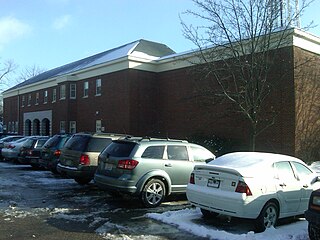
Williams Hall is located on the campus of Miami University in Oxford, Ohio. It is the home of Miami University's Department of Journalism and Department of Communications.

Andrew Jackson is a bronze equestrian statue by Clark Mills mounted on a white marble base in the center of Lafayette Square within President's Park in Washington, D.C., just to the north of the White House. Jackson is depicted dressed in military uniform, raising his hat with his right hand, while controlling the reins with his left hand as his horse rises on its rear legs.
The following is a timeline of the history of the city of New Orleans, Louisiana, USA.
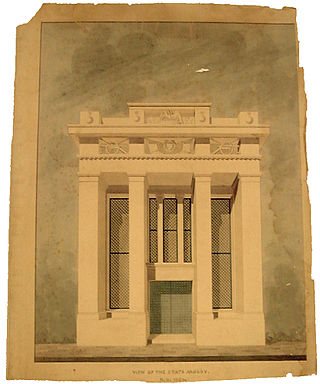
The Old Louisiana State Armory, commonly referred to as the Arsenal, faces St. Peter Street in the French Quarter only a few yards from historic Jackson Square in New Orleans, Louisiana. Since 1914 it has served as a Louisiana State Museum site; it is open to the public via the adjacent Cabildo museum.
